Characterization of Engineering-Suitable Optical Fiber Sensors Packaged with Glass Fiber-Reinforced Polymers
Abstract
:1. Introduction
2. Materials and Methods
2.1. GFRP-OF Sensor and Its Dimensional Optimization
2.2. Fabrication of the GFRP-OF Sensor
2.3. Experimental Program
2.3.1. Mechanical Tests
2.3.2. Strain and Temperature Sensing Tests
2.3.3. Fatigue Test
2.3.4. Accelerated Corrosion Test
3. Results and Discussions
3.1. Characterization of the Mechanical Behavior of the GFRP-OF Sensor
3.2. Strain and Temperature Sensing Characterization
- (1)
- Strain sensing
- (2)
- Temperature sensing
3.3. Fatigue Property Characterization
3.3.1. Variation in the Center Wavelength with Fatigue Cycles
3.3.2. Variation of Sensitivity, Repeatability, and Linearity with the Fatigue Cycles
3.3.3. Prediction of Fatigue Life
3.4. Corrosion Durability Characterization
4. Case Study
5. Conclusions
- (a)
- The fabrication method for engineering-suitable GFRP-OF sensors was introduced in detail, and the sensor was examined through SEM. According to the SEM images, the interface between bare fiber and GFRP was well combined.
- (b)
- The strain transfer error of the GFRP-OF sensor is determined by the longitudinal shear modulus and radius of the GFRP: a higher GFRP longitudinal shear modulus yields minor strain transfer error, resulting in more accurate measurement, and a smaller GFRP packaging radius introduces minor strain transfer error. Because the shear strength and diameter will affect the robustness of the GFRP-OF, the determination of diameter should seek a balance between strain transfer efficiency and robustness. The strain transfer error is less than 5% for a GFRP-OF sensor with longitudinal shear modulus in the range of 3–9 GPa and diameter in the range of 1–10 mm.
- (c)
- After packaging, the high-strength GFRP dramatically enhanced the robustness of the OF sensors; the shear bearing capacity of GFRP-OF sensors was more than 120 times larger than that of the other three coated OF sensors. The GFRP-FBG and GFRP-DOF had good strain and temperature sensing performance with high linearity, repeatability, and less hysteresis. The GFRP-FBG also exhibited excellent fatigue resistance, with absolute fluctuations of strain sensitivity coefficients within 0.02 pm/με throughout the fatigue cycles, repeatability error that did not exceed 0.5%, and nonlinear errors of less than 2%, as well as good corrosion resistance.
Author Contributions
Funding
Institutional Review Board Statement
Informed Consent Statement
Data Availability Statement
Conflicts of Interest
References
- Meltz, G.; Morey, W.W.; Glenn, W.H. Formation of Bragg gratings in optical fibers by a transverse holographic method. Opt. Lett. 1989, 14, 823–825. [Google Scholar] [CrossRef] [PubMed]
- Kent, A.M.; Michael, F.G.; Ashish, M.V.; Richard, O.C. Quadrature phase-shifted, extrinsic Fabry-Perot optical fiber sensors. Opt. Lett. 1991, 16, 273–275. [Google Scholar]
- Tateda, M.; Horiguchi, T.; Kurashima, T.; Ishihara, K. First measurement of strain distribution along field-installed optical fibers using Brillouin spectroscopy. J. Lightwave Technol. 1990, 8, 1269–1273. [Google Scholar] [CrossRef]
- Horiguchi, T.; Kurashima, T.; Tateda, M. Tensile strain dependence of Brillouin frequency shift in silica optical fibers. IEEE Photonic Technol. Lett. 1989, 1, 107–108. [Google Scholar] [CrossRef]
- Toshio, K.; Tsuneo, H.; Mitsuhiro, T. Distributed-temperature sensing using stimulated Brillouin scattering in optical silica fibers. Opt. Lett. 1990, 15, 1038–1040. [Google Scholar]
- Kurashima, T.; Tateda, M.; Horiguchi, T.; Koyamada, Y. Performance improvement of a combined OTDR for distributed strain and loss measurement by randomizing the reference light polarization state. IEEE Photonic Technol. Lett. 1997, 9, 360–362. [Google Scholar] [CrossRef]
- Maughan, S.M.; Kee, H.H.; Newson, T.P. 57-km single-ended spontaneous Brillouin-based distributed fiber temperature sensor using microwave coherent detection. Opt. Lett. 2001, 26, 331–333. [Google Scholar] [CrossRef]
- Mizuno, Y.; Zou, W.W.; He, Z.Y.; Hotat, K. Proposal of Brillouin optical correlation-domain reflectometry (BOCDR). Opt. Express 2008, 16, 12148–12153. [Google Scholar] [CrossRef]
- Wang, Y.; Yuan, H.; Liu, X.; Bai, Q.; Zhang, H.; Gao, Y.; Jin, B. A comprehensive study of optical fiber acoustic sensing. IEEE Access 2019, 7, 85821–85837. [Google Scholar] [CrossRef]
- Zhang, S.H.; Liu, B.; He, J.P. Pipeline deformation monitoring using distributed fiber optical sensor. Measurement 2019, 133, 208–213. [Google Scholar] [CrossRef]
- Berrocal, C.G.; Fernandez, I.; Bado, M.F.; Casas, J.R.; Rempling, R. Assessment and visualization of performance indicators of reinforced concrete beams by distributed optical fibre sensing. Struct. Health Monit. 2021, 20, 3309–3326. [Google Scholar] [CrossRef]
- Bao, Y.; Valipour, M.; Meng, W.; Hayat KH, K.; Chen, G. Distributed fiber optic sensor-enhanced detection and prediction of shrinkage-induced delamination of ultra-high-performance concrete overlay. Smart Mater. Struct. 2017, 26, 085009. [Google Scholar] [CrossRef]
- He, J.P.; Xue, Y.; Xu, J.; Zhang, D.Q.; Zhang, S.H. Whole-process monitoring of sinkhole collapse based on distributed optical fiber strain-vibration joint system and its case study in railway subgrade. Opt. Fiber Technol. 2020, 60, 102380. [Google Scholar] [CrossRef]
- Chai, J.; Lei, W.L.; Du, W.G.; Yuan, Q.; Zhu, L.; Zhang, D.D.; Li, H. Experimental study on distributed optical fiber sensing monitoring for ground surface deformation in extra-thick coal seam mining under ultra-thick conglomerate. Opt. Fiber Technol. 2019, 53, 102006. [Google Scholar] [CrossRef]
- Liu, S.P.; Gu, K.; Zhang, C.C.; Shi, B. Experimental research on strain transfer behavior of fiber-optic cable embedded in soil using distributed strain sensing. Int. J. Geomech. 2021, 21, 04021190. [Google Scholar] [CrossRef]
- Zhang, C.C.; Shi, B.; Zhu, H.H.; Wang, B.J.; Wei, G.Q. Toward distributed fiber-optic sensing of subsurface deformation: A theoretical quantification of ground-borehole-cable interaction. J. Geophys. Res.-Solid Earth 2020, 125, e2019JB018878. [Google Scholar] [CrossRef]
- Maraval, D.; Gabet, R.; Jaouen, Y.; Lamour, V. Dynamic optical fiber sensing with Brillouin optical time domain reflectometry: Application to pipeline vibration monitoring. J. Lightwave Technol. 2017, 35, 3296–3302. [Google Scholar] [CrossRef]
- Ren, L.; Li, H.N.; Li, S.; Li, D.S. Development of tube-packaged FBG strain sensor and application in the vibration experiment of submarine pipeline model. In Proceedings of the Advanced Sensor Systems and Applications II, Beijing, China, 8–12 November 2004; Volume 5634. [Google Scholar]
- Madani, A.; Harazim, S.M.; Bolaños Quiñones, V.A.; Kleinert, M.; Finn, A.; Ghareh Naz, E.S.; Ma, L.; Schmidt, O.G. Optical microtube cavities monolithically integrated on photonic chips for optofluidic sensing. Opt. Lett. 2017, 42, 486–489. [Google Scholar] [CrossRef]
- Havermann, D.; Mathew, J.; MacPherson, W.N.; Maier RR, J.; Hand, D.P. Temperature and strain measurements with fiber Bragg gratings embedded in stainless steel 316. J. Lightwave Technol. 2015, 33, 2474–2479. [Google Scholar] [CrossRef]
- Mou, C.B.; Saffari, P.; Li, D.Z.; Zhou, K.M.; Zhang, L.; Soar, R.; Bennion, I. Smart structure sensors based on embedded fibre Bragg grating arrays in aluminium alloy matrix by ultrasonic consolidation. Meas. Sci. Technol. 2009, 20, 034013. [Google Scholar] [CrossRef]
- Tu, Y.; Tu, S.T. Fabrication and characterization of a metal-packaged regenerated fiber Bragg grating strain sensor for structural integrity monitoring of high-temperature components. Smart Mater. Struct. 2014, 23, 035001. [Google Scholar] [CrossRef]
- Ou, J.P.; Zhou, Z. Encapsulation techniques for FBG and smart monitoring for bridges with FBG sensors. In Proceedings of the 4th International Workshop on Structural Health Monitoring at Stanford University, Stanford, CA, USA, 15–17 September 2003; pp. 180–187. [Google Scholar]
- Kuang, Y.; Guo, Y.X.; Xiong, L.; Liu, W.L. Packaging and temperature compensation of fiber Bragg grating for strain sensing: A Survey. Photonic Sens. 2018, 8, 04320. [Google Scholar] [CrossRef] [Green Version]
- Wang, H.P.; Jiang, L.Z.; Xiang, P. Priority design parameters of industrialized optical fiber sensors in civil engineering. Opt. Laser Technol. 2018, 100, 119–128. [Google Scholar] [CrossRef]
- Wang, H.P.; Jiang, L.Z.; Xiang, P. Improving the durability of the optical fiber sensor based on strain transfer analysis. Opt. Laser Technol. 2018, 42, 97–104. [Google Scholar] [CrossRef]
- Ren, P.; Zhou, Z. Low modulus polymer packaged optical fiber sensor for macro-crack monitoring in ice structures of cold regions. Opt. Eng. 2014, 53, 097102. [Google Scholar] [CrossRef]
- Sun, W.; Jia, L.F.; Wang, Z.Y.; Jia, Z.G. Optical fiber sensor encapsulated by polyurethane. Optik 2018, 165, 124–131. [Google Scholar] [CrossRef]
- Sun, Y.; Lee, H.S.; Han, B. Measurement of elastic properties of epoxy molding compound by single cylindrical configuration with embedded fiber Bragg grating sensor. Exp. Mech. 2017, 57, 313–324. [Google Scholar] [CrossRef]
- Leung, C.K.Y.; Wan, K.T.; Inaudi, D.; Inaudi, D.; Bao, X.; Habel, W.; Zhou, Z.; Ou, J.; Ghandehari, M.; Wu, H.C.; et al. Review: Optical fiber sensors for civil engineering applications. Mater. Struct. 2015, 48, 871–906. [Google Scholar] [CrossRef] [Green Version]
- Tang, Y.S.; Wu, Z.S. Distributed long-gauge optical fiber sensors based self-sensing FRP bar for concrete structure. Sensors 2016, 16, 286. [Google Scholar] [CrossRef] [Green Version]
- He, J.P.; Zhou, Z.; Ou, J.P. Optic fiber sensor-based smart bridge cable with functionality of self-sensing. Mech. Syst. Signal Pract. 2013, 35, 84–94. [Google Scholar] [CrossRef]
- Tarawneh, M.A.; Huang, Y. Glass fiber-reinforced polymer packaged fiber Bragg grating sensors for low-speed weigh-in-motion measurements. Opt. Eng. 2016, 55, 086107. [Google Scholar] [CrossRef]
- Dawood, T.A.; Shenoi, R.A.; Sahin, M. A procedure to embed fibre Bragg grating strain sensors into GFRP sandwich structures. Compos. Part A 2007, 38, 217–226. [Google Scholar] [CrossRef]
- Huang, M.H.; Zhou, Z.; Huang, Y.; Ou, J.P. A distributed self-sensing FRP anchor rod with built-in optical fiber sensor. Measurement 2013, 46, 1363–1370. [Google Scholar] [CrossRef]
- Wang, H.P.; Xiang, P.; Jiang, L.Z. Strain transfer theory of industrialized optical fiber-based sensors in civil engineering: A review on measurement accuracy, design and calibration. Sens. Actuators A Phys. 2019, 285, 414–426. [Google Scholar] [CrossRef]
- Vedernikov, A.; Safonov, A.; Tucci, F.; Carlone, P.; Akhatov, I. Pultruded materials and structures: A review. J. Compos. Mater. 2022, 54, 4081–4117. [Google Scholar] [CrossRef]
- Vedernikov, A.; Safonov, A.; Tucci, F.; Carlone, P.; Akhatov, I. Modeling spring-in of L-shaped structural profiles pultruded at different pulling speeds. Polymers 2021, 13, 2748. [Google Scholar] [CrossRef]
- Shao, L.; Ou, J.P.; Zhou, Z. Development of a new anchorage system for carbon fiber–reinforced polymer rods using extrusion process. Adv. Struct. Eng. 2022, 25, 1002–1014. [Google Scholar]
- ACI440.1R-15; Guide for the Design and Construction of Structural Concrete Reinforced with Fiber Reinforced Polymer (FRP) Bars. ACI Committee 440; IHS Group: Farmington Hills, MI, USA, 2015.
- He, J.P. Full-Scale Distributed Monitoring Technology of Optical Fiber Brillouin and its Applications in Civil Engineering. Ph.D. Thesis, Harbin Institute of Technology, Harbin, China, 2009. (In Chinese). [Google Scholar]



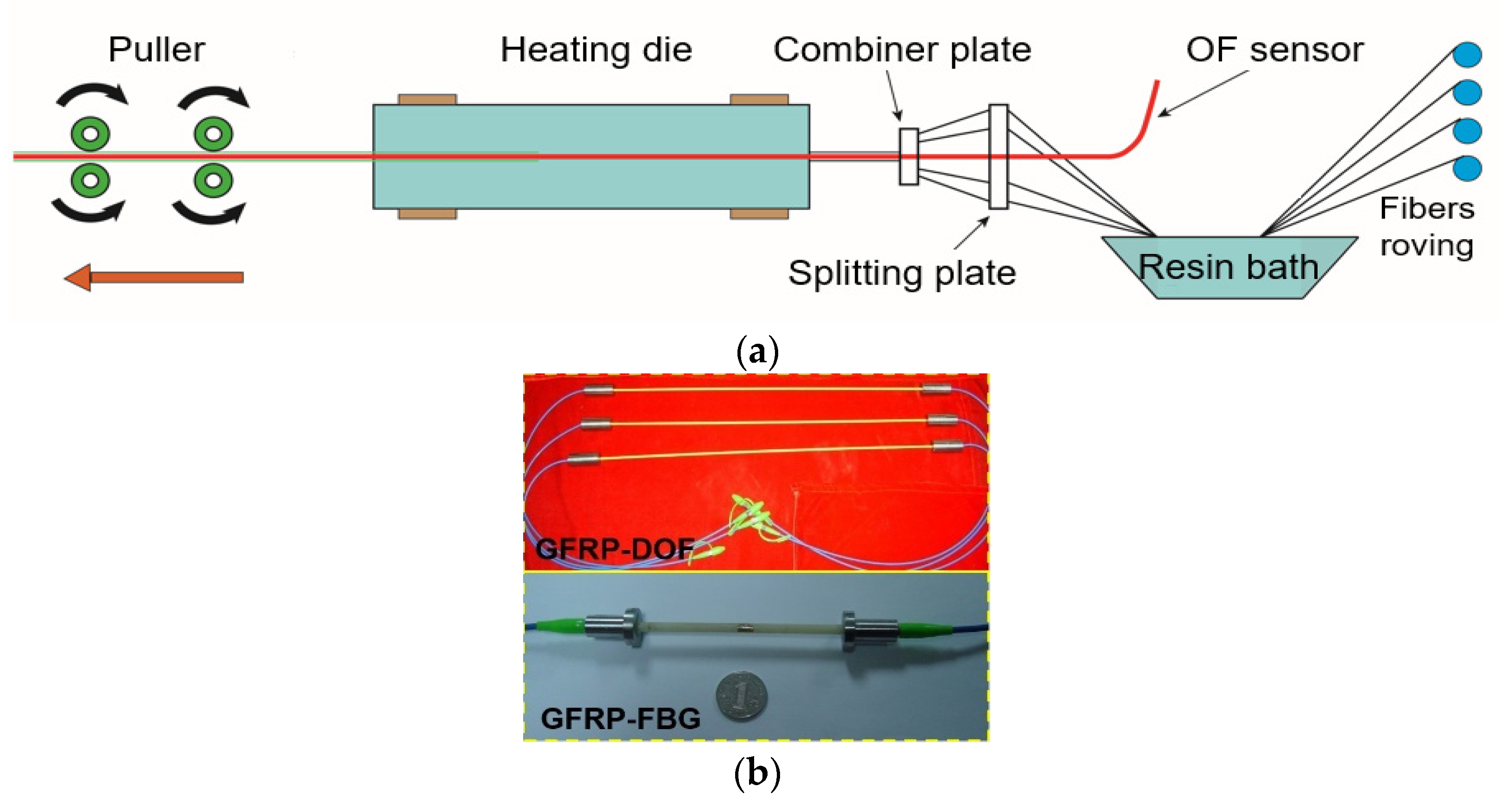
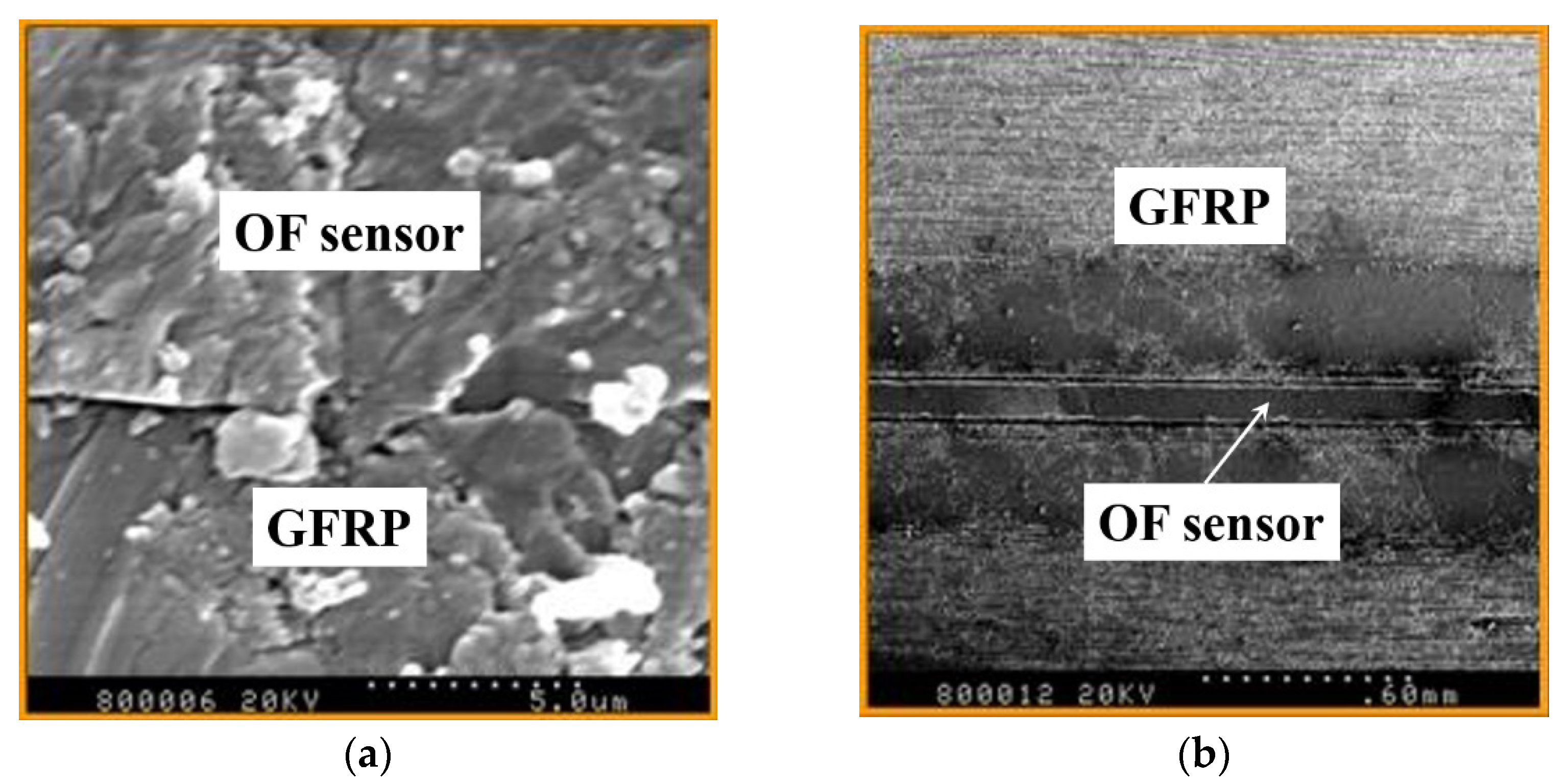



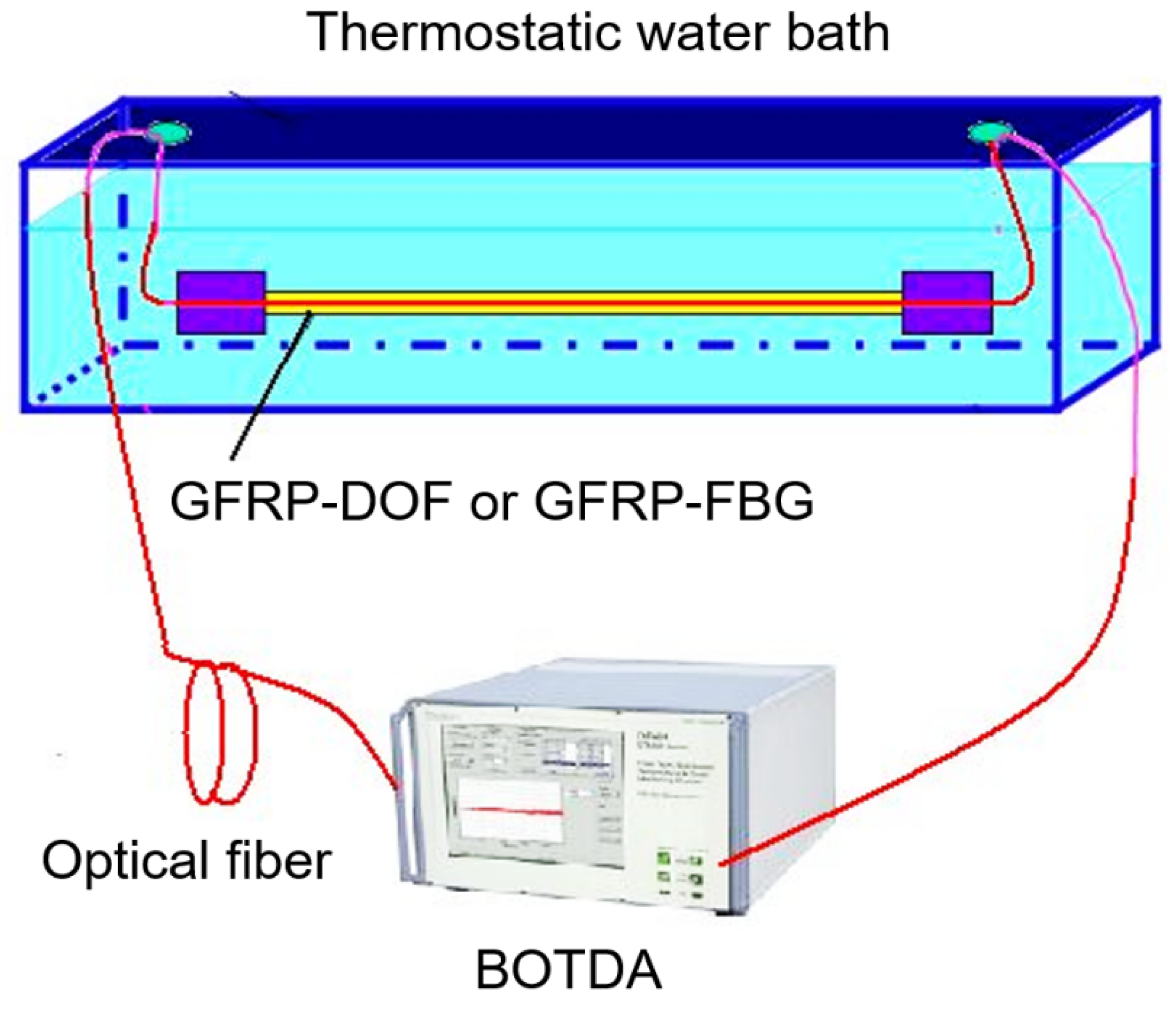
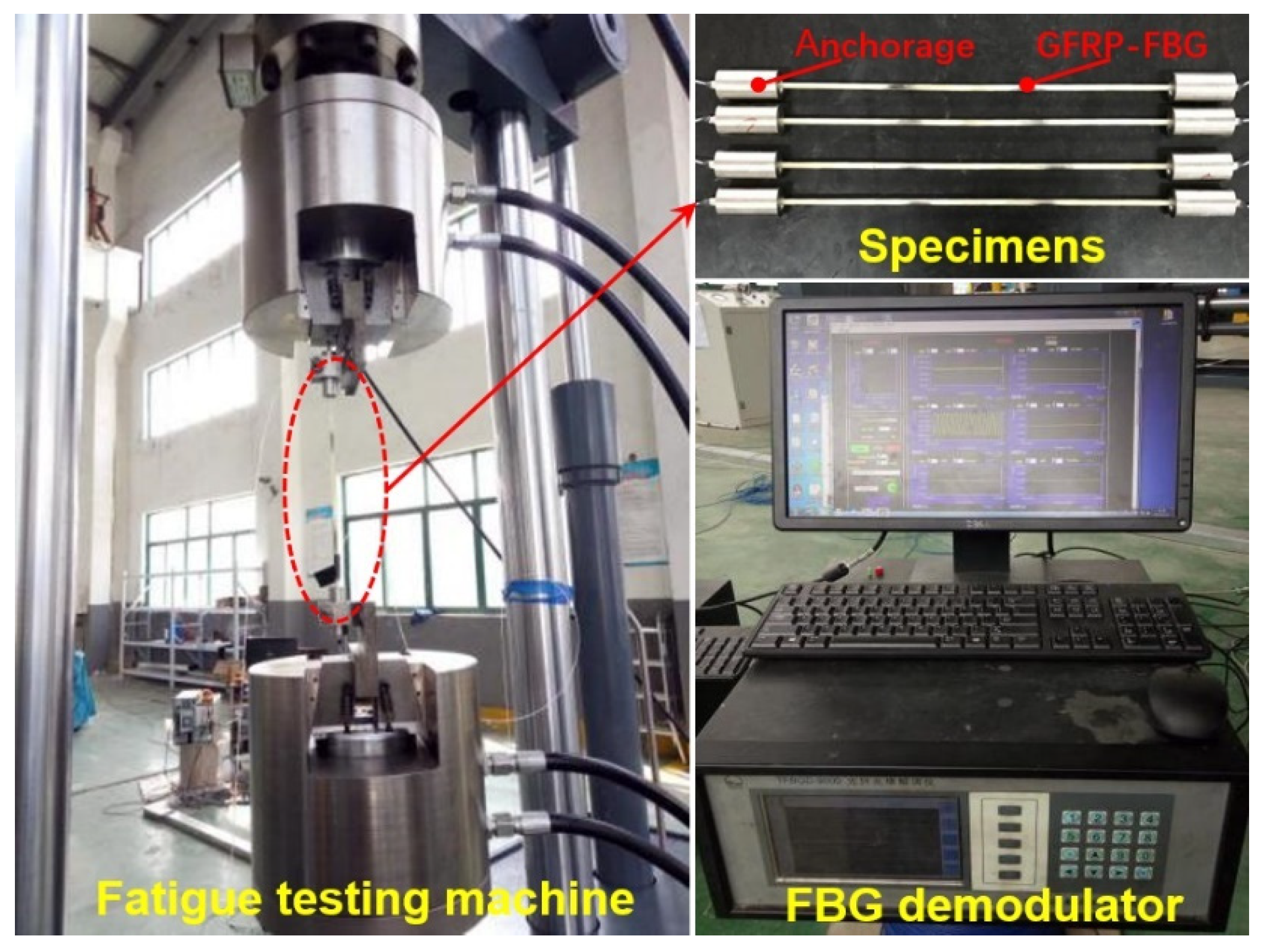
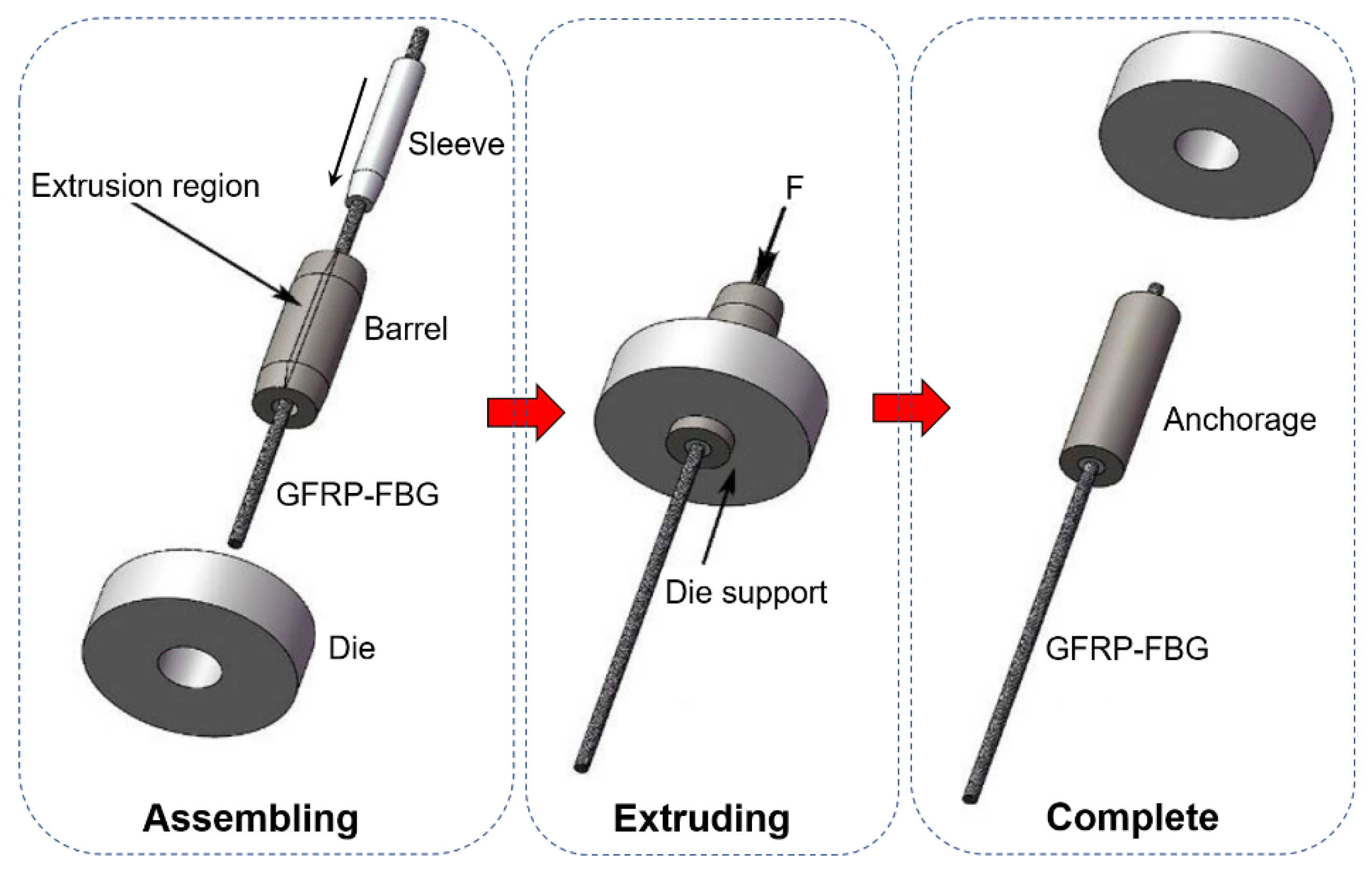
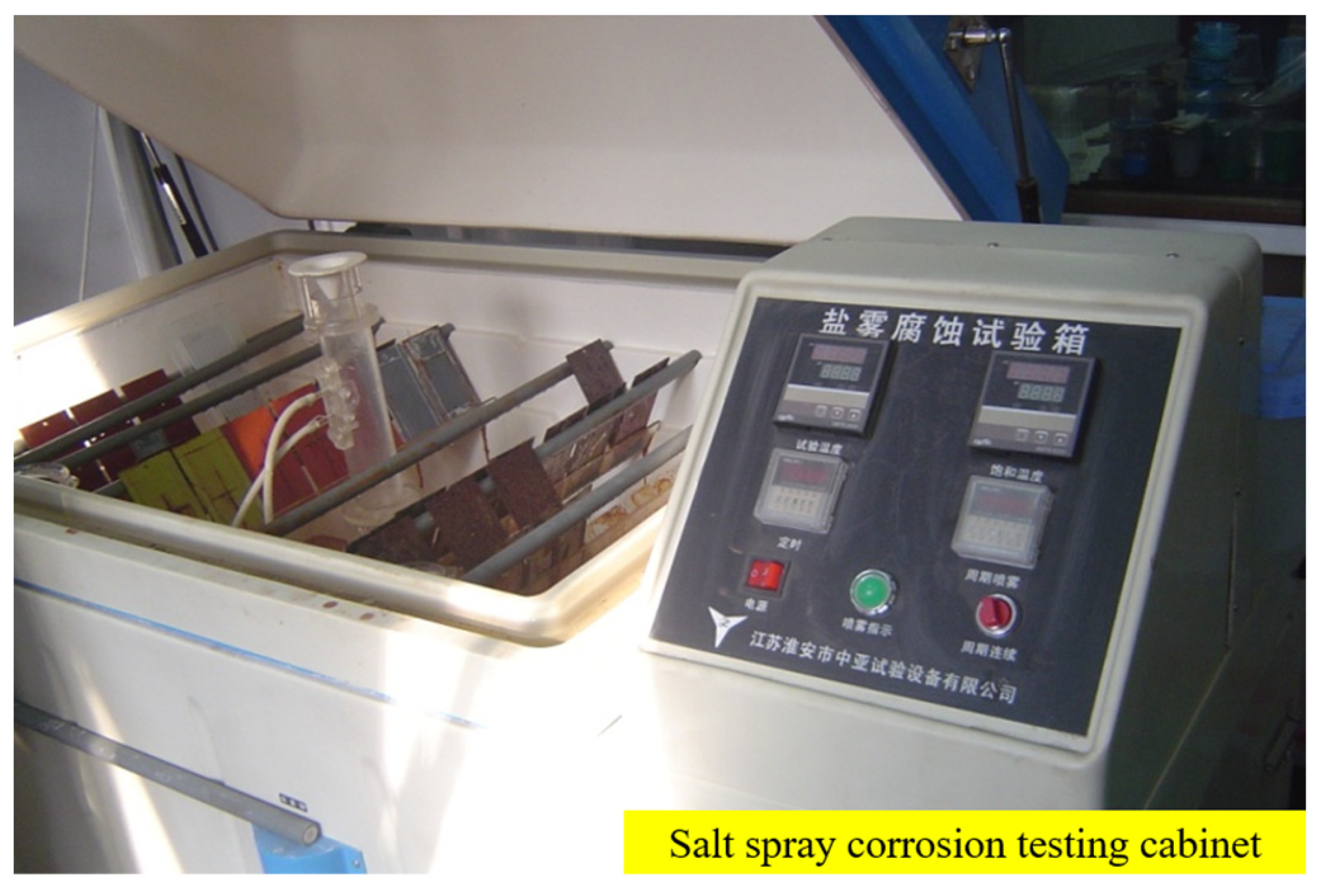


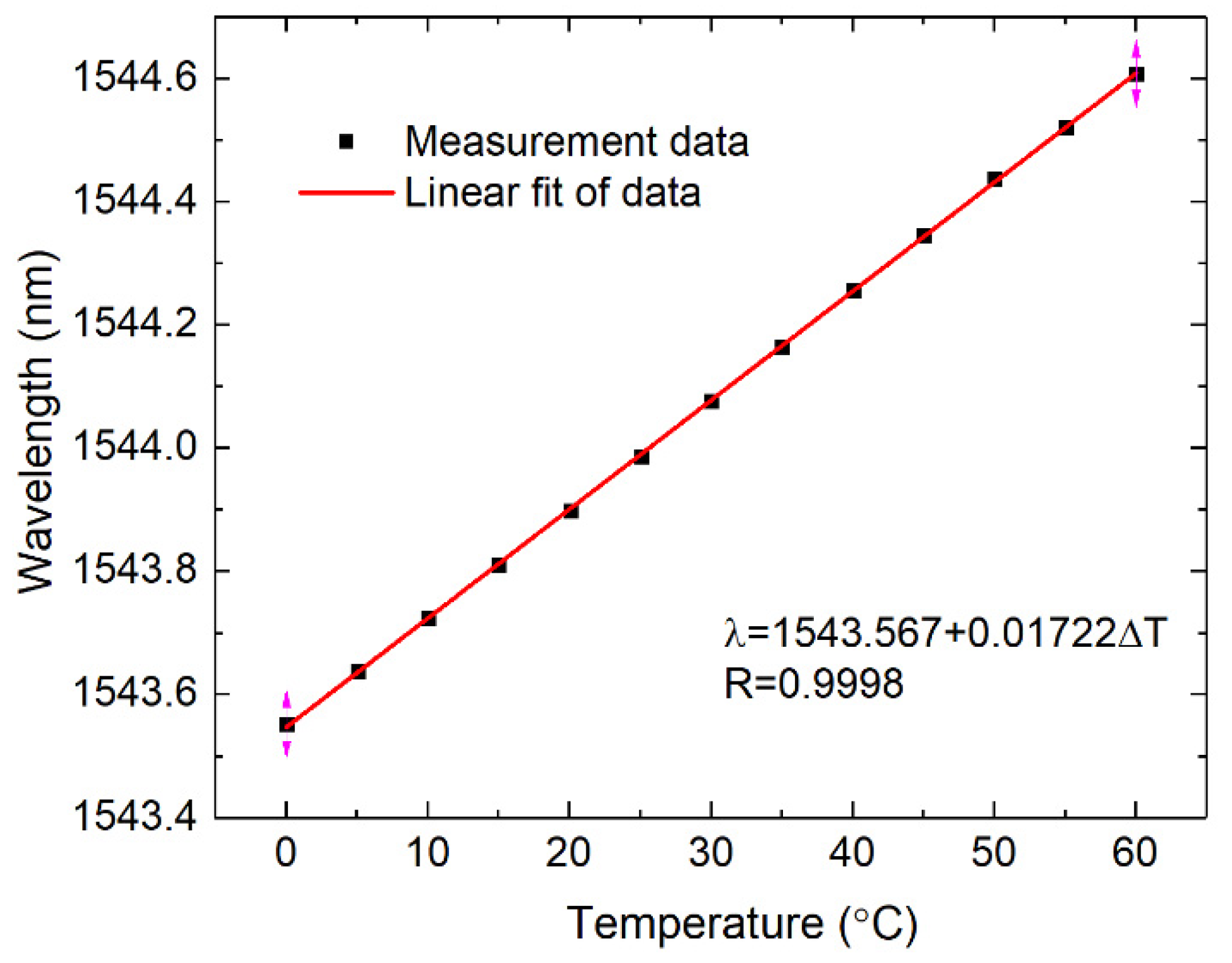
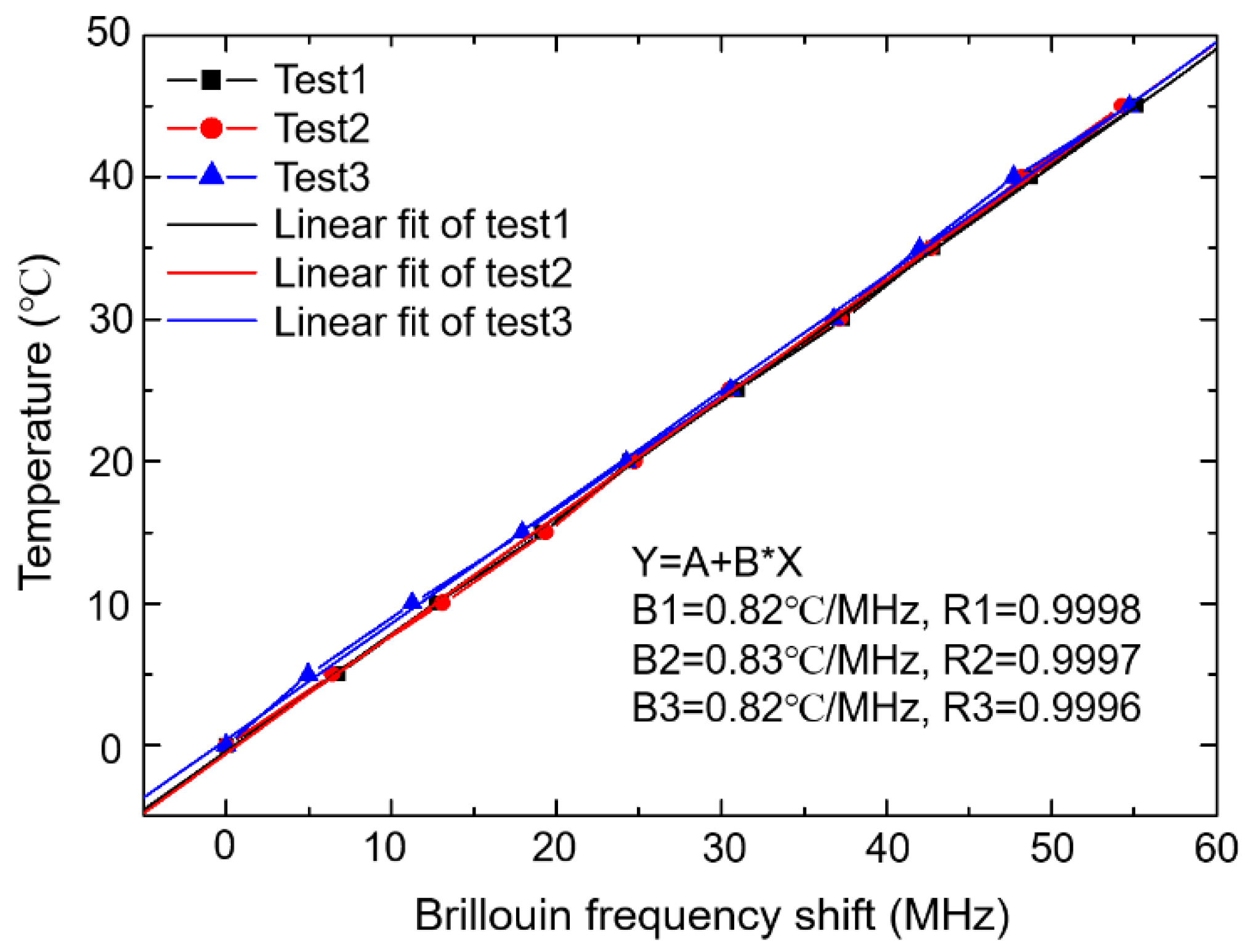
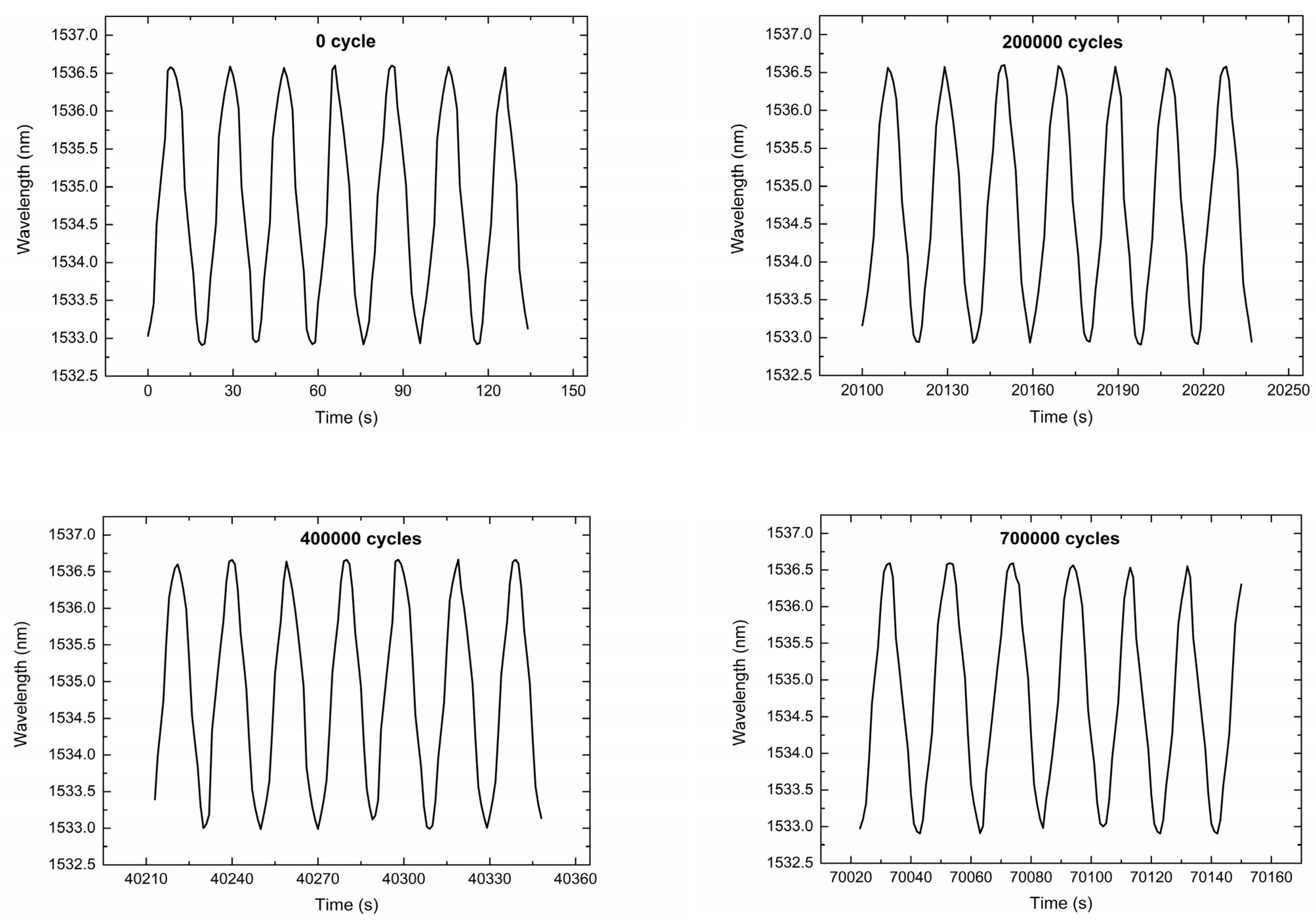



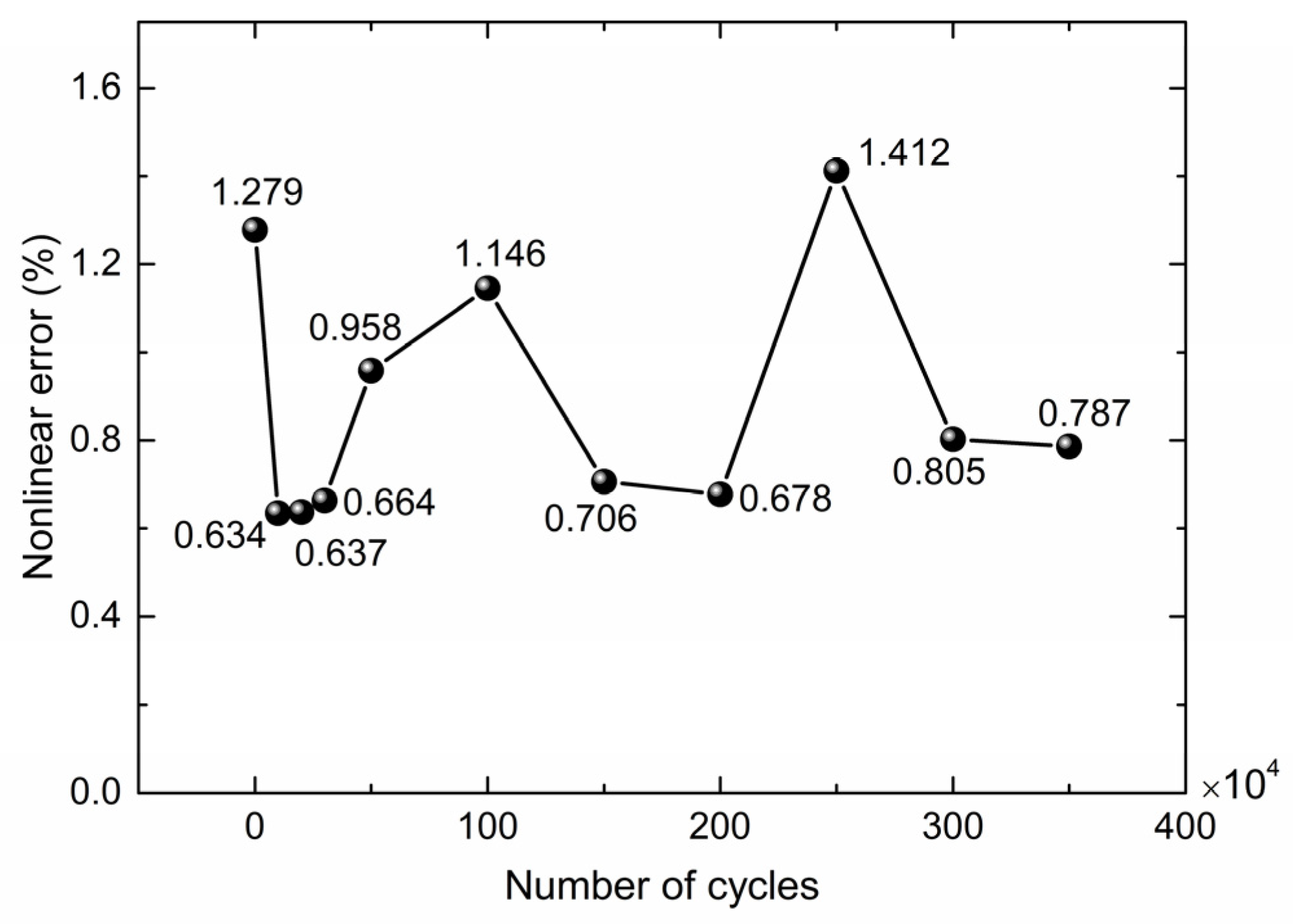
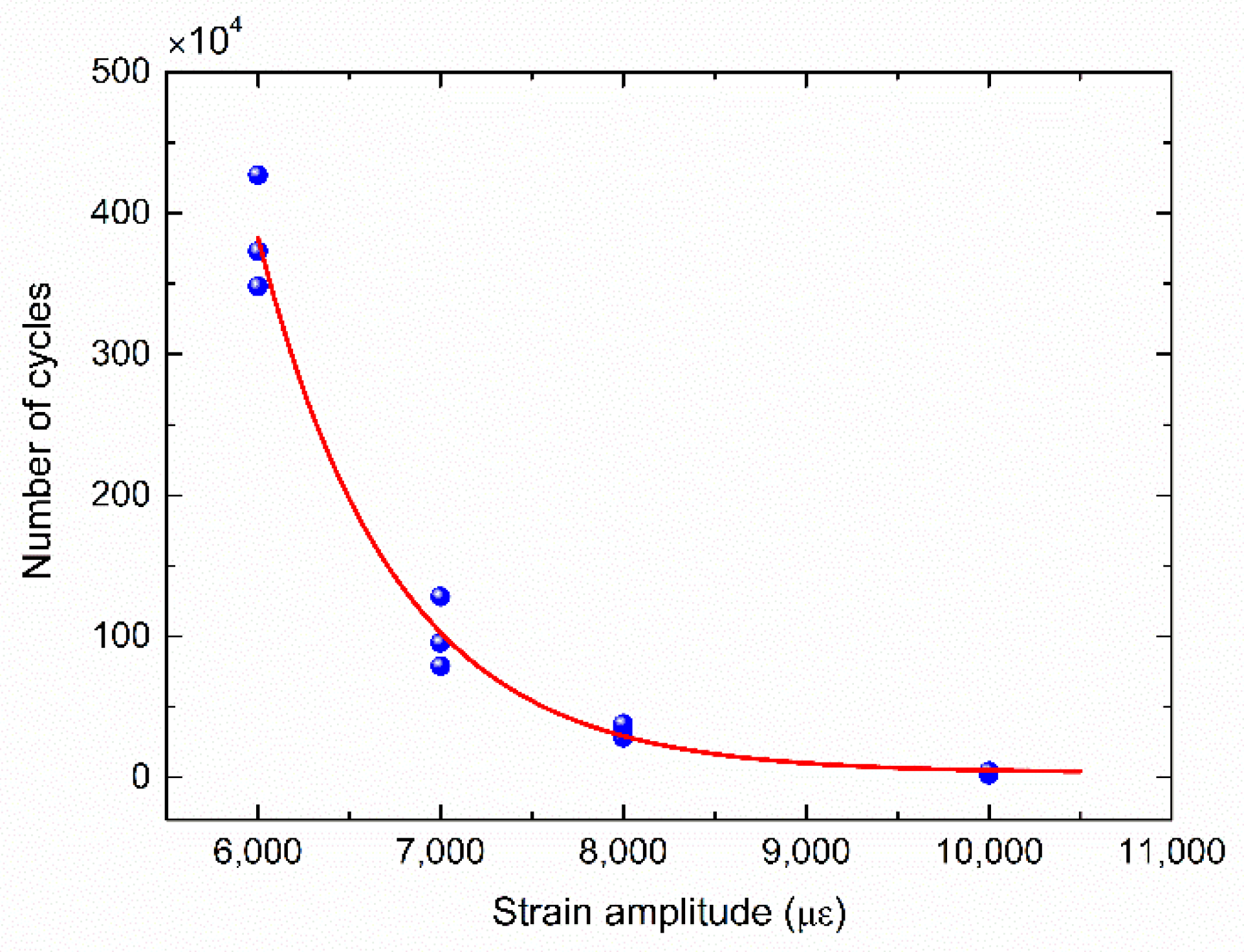

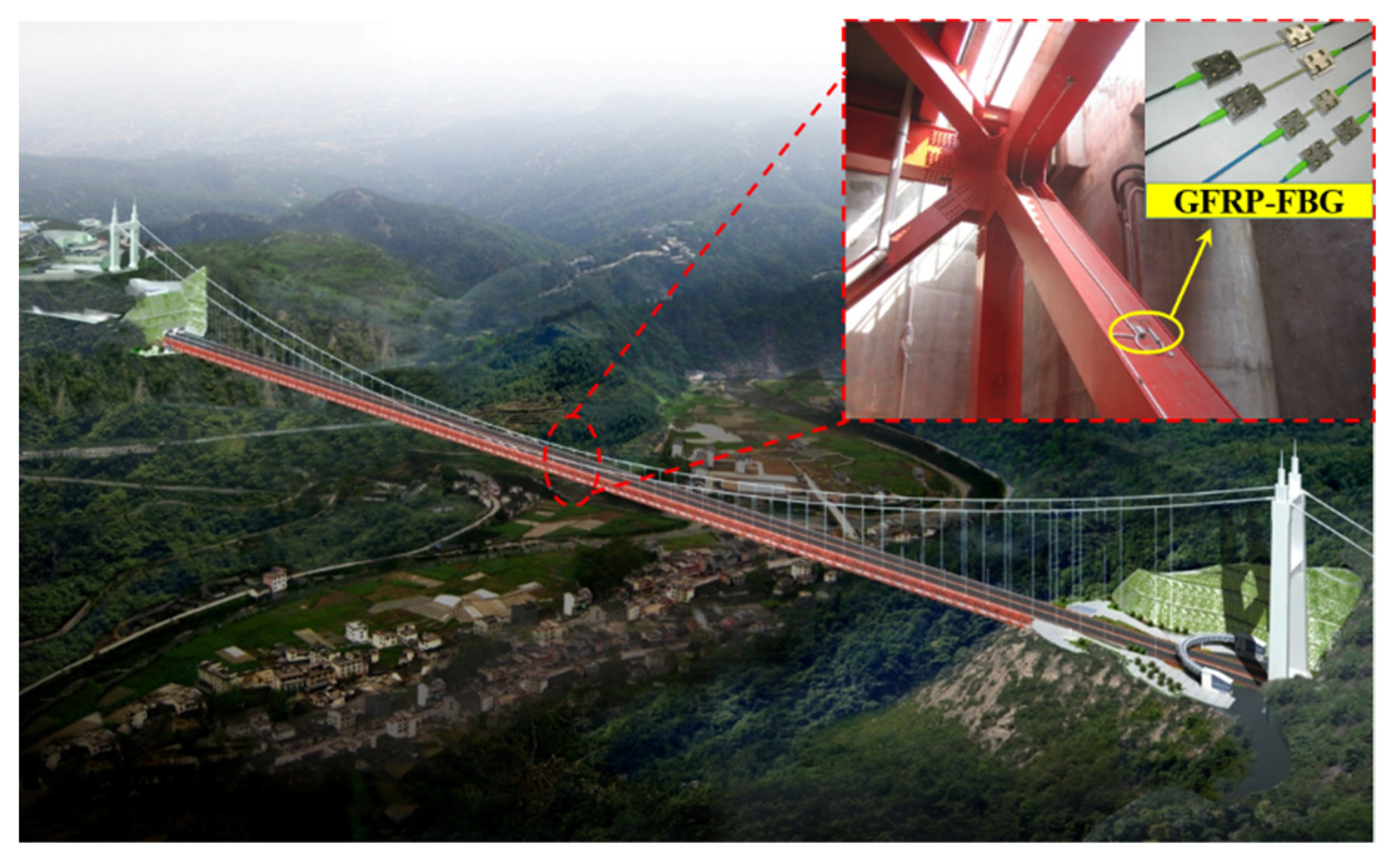
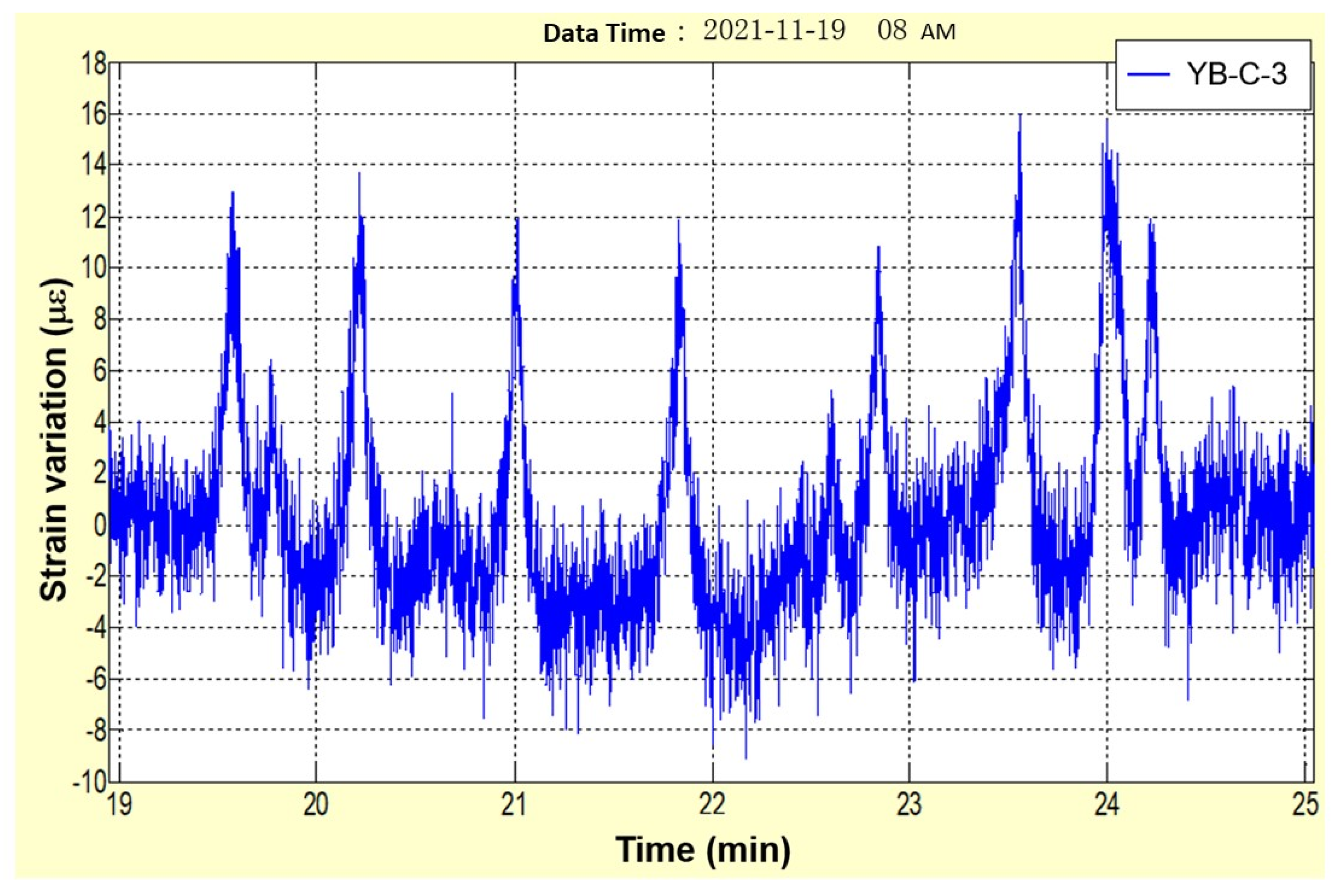
| Description | Symbols | Values | Unit |
|---|---|---|---|
| Young’s modulus of optical fiber | 7.2 × 1010 | Pa | |
| Radius of optical fiber | 6.25 × 10−5 | m | |
| Longitudinal shear modulus of GFRP | 1 × 109~10 × 109 | Pa | |
| Thickness of GFRP | 0.001~0.01 | m | |
| Half of the gauge length | 0.01 | m |
| No | Type of OF Sensor | Coating/Packaging Material | Dia. (mm) | Company |
|---|---|---|---|---|
| 1 | SMF28 bare OF | UV Acrylics | 0.25 | Corning Inc. (New York, NY, USA) |
| 2 | Polyimide-coated OF | Polyimide | 0.17 | T&S Communications LTD (Shenzhen, China) |
| 3 | Carbon-coated OF | Carbon | 0.17 | OFS Fitel, LLC (Norcross, GA, USA) |
| 4 | GFRP-packaged OF | GFRP | 5.00 | Harbin Tide Science & Technology Inc. (Harbin, China) |
| No. | OF Type | Coating/Packaging Materials | Dia. (mm) | Shear Strength (MPa) | Shear Force (N) | Ultra Strain (με) | |||
|---|---|---|---|---|---|---|---|---|---|
| Mean Value | Standard Deviation | Mean Value | Standard Deviation | Mean Value | Standard Deviation | ||||
| 1 | SMF28 bare OF | UV Acrylics | 0.25 | 67.04 | 3.76 | 3.29 | 0.22 | 17,500 | 693 |
| 2 | Polyimide-coated OF | Polyimide | 0.17 | 278.31 | 9.83 | 6.31 | 0.53 | 47,907 | 1919 |
| 3 | Carbon-coated OF | Carbon | 0.17 | 145.12 | 7.22 | 3.29 | 0.16 | 31,939 | 1710 |
| 4 | GFRP-packaged OF | GFRP | 5.00 | 105.00 | 5.03 | 741.83 | 26.21 | 20,375 | 1261 |
| Test Conditions | Strain Amplitude (με) | Specimen Number | Fatigue Cycle Number (10,000 Times) | Wavelength Variation (pm) | |
|---|---|---|---|---|---|
| Mean Value | Standard Deviation | ||||
| Fatigue tests with higher cyclic strain | 0~10,000 | F10-1 | 1.9301 | 11 | 0.041 |
| F10-2 | 4.3422 | 9 | 0.038 | ||
| F10-3 | 2.2398 | 9 | 0.029 | ||
| 0~8000 | F8-1 | 33.5210 | 7 | 0.017 | |
| F8-2 | 28.1386 | 10 | 0.033 | ||
| F8-3 | 38.0440 | 8 | 0.031 | ||
| 0~7000 | F7-1 | 78.9963 | 8 | 0.034 | |
| F7-2 | 95.4139 | 9 | 0.029 | ||
| F7-3 | 128.1010 | 6 | 0.027 | ||
| 0~6000 | F6-1 | 372.9284 | 8 | 0.027 | |
| F6-2 | 427.0311 | 3 | 0.009 | ||
| F6-3 | 348.0035 | 7 | 0.019 | ||
| Fatigue tests with lower cyclic strain | 0~2000 | F2-1 | 800 | 5 | 0.013 |
| F2-2 | 800 | 4 | 0.008 | ||
| F2-3 | 800 | 7 | 0.022 | ||
| Object | Monitoring Items | GFRP-FBG Sensors | |||
|---|---|---|---|---|---|
| Frequency | Accuracy | Scale | Numbers | ||
| Main-beam | Steel strain | 20 Hz | 1 με | ±1000 με | 40 |
| Main-beam | Steel temperature | 1 time/h | 0.5 °C | −20 °C~70 °C | 15 |
| Main-tower | Concrete strain | 20 Hz | 1 με | ±1000 με | 8 |
| Main-tower | Concrete temperature | 1 time/h | 0.5 °C | −20 °C~70 °C | 8 |
Publisher’s Note: MDPI stays neutral with regard to jurisdictional claims in published maps and institutional affiliations. |
© 2022 by the authors. Licensee MDPI, Basel, Switzerland. This article is an open access article distributed under the terms and conditions of the Creative Commons Attribution (CC BY) license (https://creativecommons.org/licenses/by/4.0/).
Share and Cite
Jiao, T.; Pu, C.; Xing, W.; Lv, T.; Li, Y.; Wang, H.; He, J. Characterization of Engineering-Suitable Optical Fiber Sensors Packaged with Glass Fiber-Reinforced Polymers. Symmetry 2022, 14, 973. https://doi.org/10.3390/sym14050973
Jiao T, Pu C, Xing W, Lv T, Li Y, Wang H, He J. Characterization of Engineering-Suitable Optical Fiber Sensors Packaged with Glass Fiber-Reinforced Polymers. Symmetry. 2022; 14(5):973. https://doi.org/10.3390/sym14050973
Chicago/Turabian StyleJiao, Tong, Chuhong Pu, Wenjing Xing, Tao Lv, Yuan Li, Huaping Wang, and Jianping He. 2022. "Characterization of Engineering-Suitable Optical Fiber Sensors Packaged with Glass Fiber-Reinforced Polymers" Symmetry 14, no. 5: 973. https://doi.org/10.3390/sym14050973






